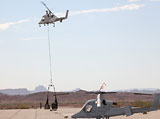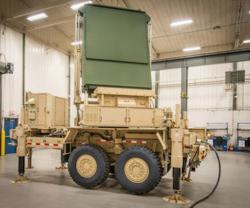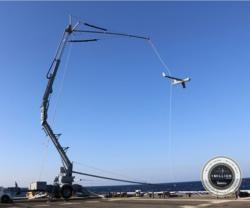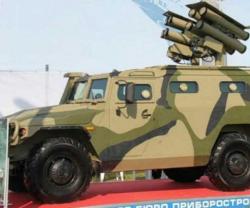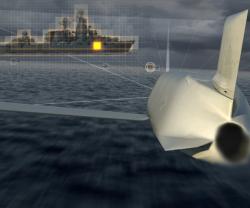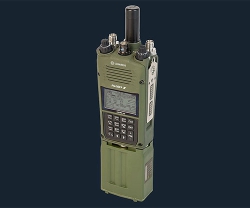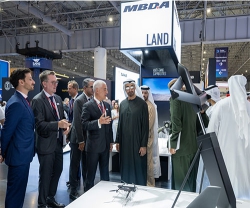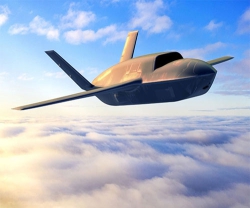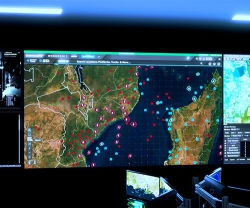LM-Kaman's K-MAX Completes Quick Reaction Assessment
08.09.2011 South America
The Lockheed Martin-led unmanned K-MAX® team successfully completed a five-day Quick Reaction Assessment (QRA) for the U.S. Navy's Cargo Unmanned Aircraft Systems (UAS) program.
"The autonomous flying K-MAX is designed to resupply Marines on the battlefield and in remote locations," said Roger Il Grande, Director of Airborne Systems at Lockheed Martin Mission Systems & Sensors. "Through various scenarios during QRA, the unmanned K-MAX UAS performed extremely well, exceeding the cargo delivery objectives of the assessment."
The U.S. Navy awarded Lockheed Martin a $45.8 million contract in December 2010 for unmanned K-MAX helicopters to perform in a U.S. Marine Corps evaluation of unmanned cargo resupply. The Navy intends to field a Cargo UAS this fall for a six-month deployment to augment Marine Corps ground and air logistics operations in Afghanistan.
"The Quick Reaction Assessment proved sustainment of a cargo-carrying capability in an operational environment," said Capt. Patrick Smith, Cargo UAS Program Manager at the Navy's Patuxent River, Maryland, facility. "We look forward to deploying a capability that will supplement rotary wing assets and reduce Marine Corps exposure to improvised explosive devices in theater.
A formal report will be released by Commander Operational Test and Evaluation Force (COMOPTEVFOR) 30 days post completion of QRA. Results will be reviewed by Navy and Marine Corps leadership to determine the system's suitability for deployment.
In July, the unmanned K-MAX successfully completed Electromagnetic Environmental Effects (E3) testing at Pax River. The purpose of the E3 testing was to measure and provide results regarding the aircraft's electromagnetic susceptibility to certain frequencies, which can affect flight-critical and other systems on the aircraft.
"Since partnering in 2007, Lockheed Martin and Kaman Aerospace have successfully transformed Kaman's proven K-MAX power-lift manned helicopter into a UAS capable of autonomous or remote controlled cargo delivery," said Terry Fogarty, general manager, UAS Product Group at Kaman Aerospace.
Kaman designed the K-MAX platform, and Lockheed Martin designed the helicopter's mission management and control systems to provide the K-MAX with exceptional flight autonomy in remote environments and over long distances.
"The autonomous flying K-MAX is designed to resupply Marines on the battlefield and in remote locations," said Roger Il Grande, Director of Airborne Systems at Lockheed Martin Mission Systems & Sensors. "Through various scenarios during QRA, the unmanned K-MAX UAS performed extremely well, exceeding the cargo delivery objectives of the assessment."
The U.S. Navy awarded Lockheed Martin a $45.8 million contract in December 2010 for unmanned K-MAX helicopters to perform in a U.S. Marine Corps evaluation of unmanned cargo resupply. The Navy intends to field a Cargo UAS this fall for a six-month deployment to augment Marine Corps ground and air logistics operations in Afghanistan.
"The Quick Reaction Assessment proved sustainment of a cargo-carrying capability in an operational environment," said Capt. Patrick Smith, Cargo UAS Program Manager at the Navy's Patuxent River, Maryland, facility. "We look forward to deploying a capability that will supplement rotary wing assets and reduce Marine Corps exposure to improvised explosive devices in theater.
A formal report will be released by Commander Operational Test and Evaluation Force (COMOPTEVFOR) 30 days post completion of QRA. Results will be reviewed by Navy and Marine Corps leadership to determine the system's suitability for deployment.
In July, the unmanned K-MAX successfully completed Electromagnetic Environmental Effects (E3) testing at Pax River. The purpose of the E3 testing was to measure and provide results regarding the aircraft's electromagnetic susceptibility to certain frequencies, which can affect flight-critical and other systems on the aircraft.
"Since partnering in 2007, Lockheed Martin and Kaman Aerospace have successfully transformed Kaman's proven K-MAX power-lift manned helicopter into a UAS capable of autonomous or remote controlled cargo delivery," said Terry Fogarty, general manager, UAS Product Group at Kaman Aerospace.
Kaman designed the K-MAX platform, and Lockheed Martin designed the helicopter's mission management and control systems to provide the K-MAX with exceptional flight autonomy in remote environments and over long distances.
Previous PostCassidian’s Role at Lorca Earthquake & Ibiza Fire
Latest news
Latest events
Dubai Airshow
17 - 21 Nov 2025Dubai World Central (DWC) - United Arab EmiratesEgypt Defence Expo (EDEX)
01 - 04 Dec 2025Egypt International Exhibition Center New Cairo - EgyptDoha International Maritime Defence Exhibition & Conference (DIMDEX 2026)
19 - 22 Jan 2026Doha - QatarUMEX – SimTEX
20 - 22 Jan 2026ADNEC Centre Abu Dhabi, - United Arab Emirates

